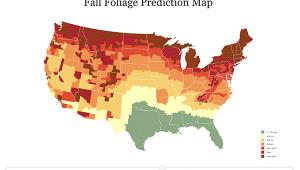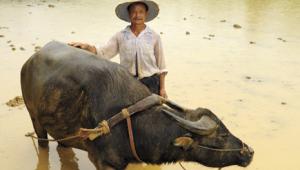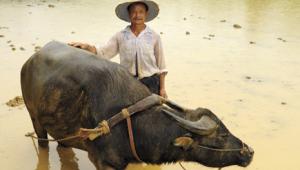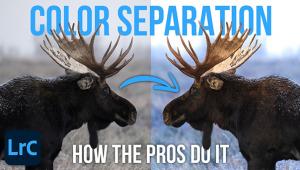Glacier National Park; Big Sky And Great Views Page 2
Another popular trail is Hidden Lake (6 miles round trip). This trail rises several hundred feet, from the Visitors Center, over open tundra, arriving at an overlook 700 ft above Hidden Lake. Mountain goats frequent the trail and wildflowers abound. Because it sits in a deep bowl, Hidden Lake is cast in shadow early and late in the day. It’s spectacular though even in midday light. It’s situations like this where a D-SLR and/or post-processing software shine. I can now shoot all day, regardless of lighting conditions, by thinking black and white—which renders best under harsh, contrasty midday lighting conditions.
 |
|
|
St. Mary Lake
Continuing toward St. Mary, a notable stop is Sunrift Gorge. Take the trail to Baring, Virginia, and St. Mary Falls—well worth the effort. Sun Point is another awe-inspiring location—the promontory overlooks St. Mary Lake framed by peaks of the Continental Divide. Sun Point faces west so photography is generally best first thing in the morning. One of the most popular photo spots is Wild Goose Island. This is a prime location and can be crowded at times. Morning light is best, but may be challenging due to mountain-cast shadows at first light. Going-to-the-Sun Road ends not too far beyond Wild Goose Island, but not so far for our photographic journey. Reaching US Route 89, at St. Mary, it’s decision time: north brings you to the Many Glacier area; south goes to Two Medicine. Don’t pass up either area—each is unique with lots of photo ops.
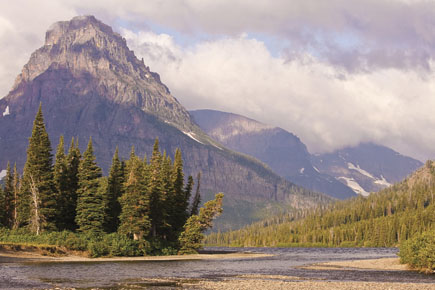 |
|
|
Many Glacier
Many Glacier is home to the historic Many Glacier Hotel. Nature is unspoiled here and there are innumerable photographic opportunities. For the long lens enthusiast, this is the place to be—wildlife is plentiful and encounters with deer, moose, bighorn sheep, and grizzlies are common. Sunrise and sunset are prime times, but this is definitely a place where you can find lots of things to photograph all day.
Two Medicine
Two Medicine is at the southern end of the park. Here, Sinopah Mountain is the dominant feature in the landscape. The Two Medicine Valley’s orientation allows great dawn and dusk lighting. There are fewer hiking trails here and they tend to be more difficult, and visitor amenities are limited. A good photo stop is Running Eagle Falls. This cascade is unique in that water flows through the cliff face rather than over it. Running Eagle Falls is best shot during early morning because of prevailing
light direction.
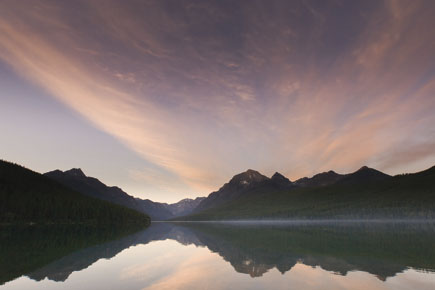 |
|
|
East Glacier
Should you opt not to retrace your route returning to West Glacier, a worthwhile detour is Glacier Park Lodge in East Glacier. Its entry garden sports a large variety of indigenous wildflowers that are ideal for close-ups. Another worthwhile stop, along Route 2, is Goat Lick Overlook. This natural salt formation is a favorite hangout for mountain goats and bighorn sheep. The overlook will be in shade for a good part of the early day. Here, a long lens will be needed to get in tight
Polebridge
Polebridge is the gateway to the park’s northwestern entrance, and to Bowman and Kintla Lakes. These lakes are spectacular, especially in early autumn when Western larches display their golden needles. Sunrise and sunset lighting is great at both locations.
At Polebridge you’ll catch a glimpse of Montana’s past, much unchanged since the early 1900s. Take the North Fork Road, or Inside North Fork, to get there. This northern region of the park is one of the few areas that is home to elk and several packs of gray wolf.
Glacier At A Glance
 |
|
|
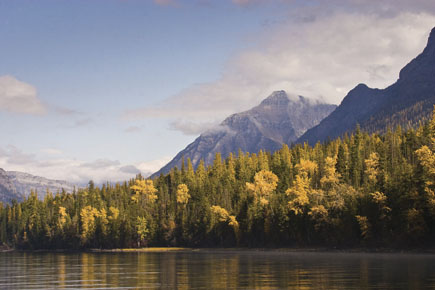 |
|
|
Glacier National Park is slow paced, serene, and less crowded than other national parks, and is a photographer’s delight. Glacier could easily take several lifetimes to fully explore and enjoy. The road network accesses only a small portion of the park, and while there are over 700 miles of hiking and horse trails, the majority of Glacier remains untouched. Accommodations and visitor amenities are limited, and Glacier’s season is relatively short. The high country and Logan Pass rarely open until late in June because of lingering snows. Wildflowers bloom shortly after snows have melted, which can be mid-July to early August in the mountains and late May/early June at lower elevations. Late September and early October are best for scenic color and foggy mornings. The National Park Service’s website (www.nps.gov/glac) offers a wealth of information on accommodations, services, road and trail closures, activities, natural history, etc.
Rick Sheremeta conducts workshops in the Northern Rockies and is a Photographic Instructor for the Glacier Institute. To learn more, visit www.alpenglowproductions.com.
- Log in or register to post comments
